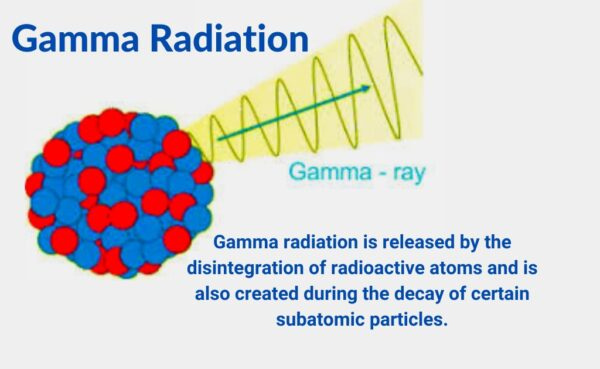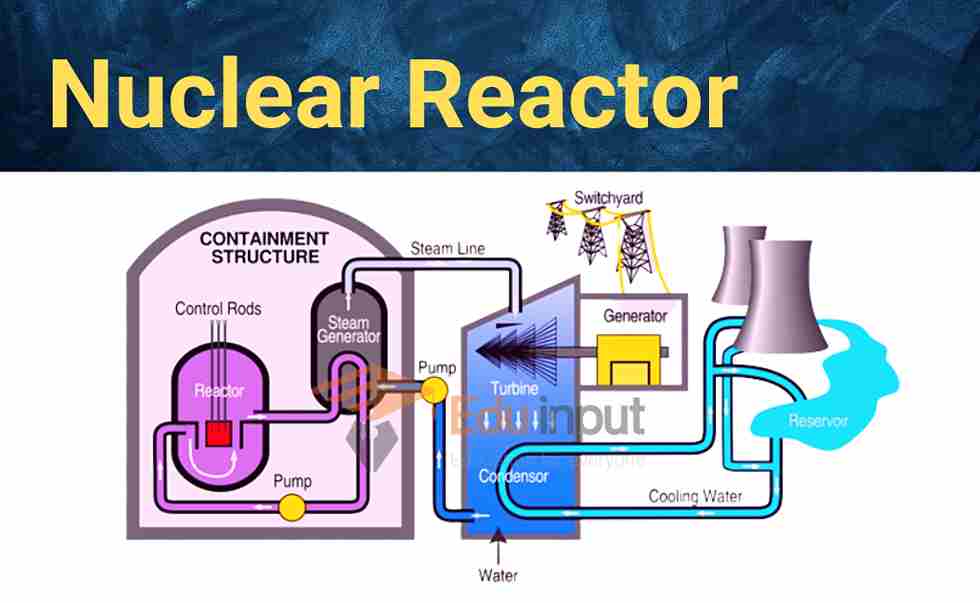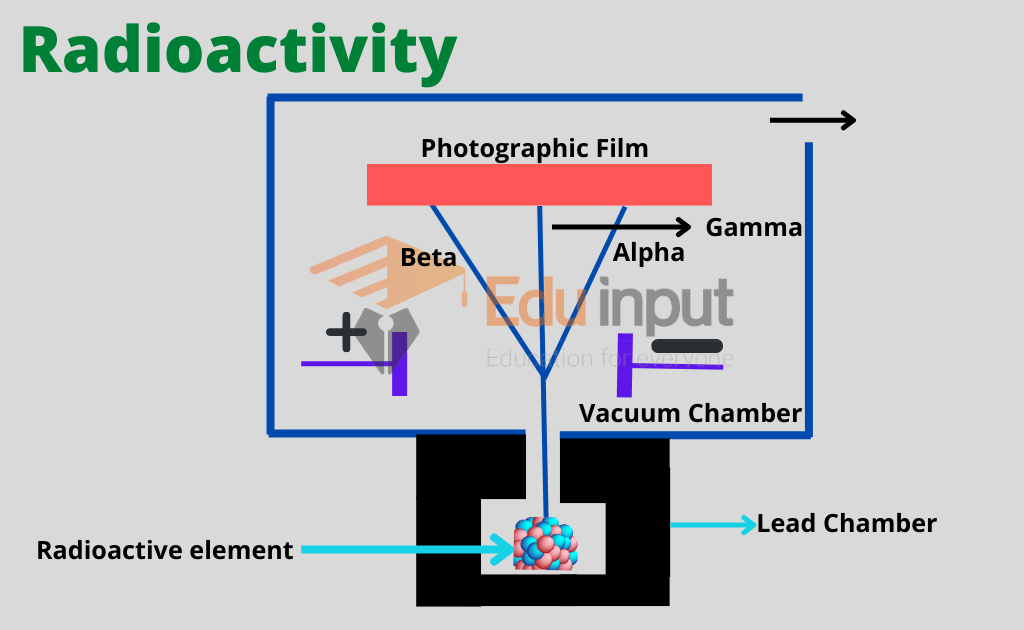Geiger Muller Counter-Construction and Working of Geiger Muller Counter
Geiger Muller Counter is a radiation detector device. Geiger Muller Counter is an electronic instrument used for detecting and measuring ionizing radiation.
Geiger Muller Counter
Geiger-Muller tube is a well-known radiation detector. The discharge in the tube results from the ionization produced by the incident radiation.
Geiger Muller counter Construction:
It consists of a stiff central wire acting as an anode in a hollow metal cylinder acting as a cathode filled with a suitable mixture of gas at about 0.1 atmospheric pressure.

One end of the tube has a thin mica window to allow the entry of α or β-particles and the other end is sealed by non-conducting material and carries the connecting pins for the two electrodes.
A high potential difference, (about 400 V for neon-bromine-filled tubes) but slightly less than that necessary to produce discharge through the gas is maintained between the electrodes.
Working of Geiger Muller Counter:
When radiation enters the tube, ionization is produced. The free electrons are attracted toward the positively charged central wire.
As they are accelerated towards the wire by a strong electric field, they collide with other molecules of the gas and knock out more electrons which in turn do the same and produce a flow of electrons that move towards the central wire.
This makes a short pulse of electric current pass through an external resistor. It is amplified and registered electronically. The counter, which also provides power, is called a sealer.
The flow of electrons produced by the entry of an ionizing particle is counted as a single pulse of approximately of the same size whatever the energy or path of the particle may be.
It cannot, thus, discriminate between the energies of the incident particle as output pulses are the same. The entire electron pulse takes less than 1μs.
Dead time in Geiger Muller Counter
However, positive ions, being very massive than the electrons, take several hundred times as long to reach the outer cathode.
During this time, called the dead time (~10-4s) of the counter, further incoming particles cannot be counted.
What is Quenching?
When positive ions strike the cathode, secondary electrons are emitted from the surface. These electrons would be accelerated to give further spurious counts. This is prevented by mixing a small amount of quenching gas with the principal gas.
The quenching gas must have an ionization potential lower than that of inert or principal gas.
Thus, the ions of quenching gas reach the cathode before principal gas ions. When they reach the cathode, they capture electrons and become neutral molecules. Following neutralization, the excess energy of the quenching molecules is dissipated in the dissociation of the molecules rather than in the release of electrons from the cathode.
Example:
When bromine gas is added to neon gas in a GM tube. The bromine molecules absorb energy from the ions or secondary electrons and dissociate into bromine atoms. The atoms then readily recombine into molecules again for the next pulse.
The gas quenching is called self-quenching. Although all commercial Geiger tubes are self-quenched, it is common practice to use electronic quenching in addition.
For this purpose, a large negative voltage is applied to the anode immediately after recording the output pulse. This reduces the electric field below the critical value for ionization by collision.
The negative voltage remains until all the positive ions are collected at the cathode thus preventing secondary pulses.
Uses of Geiger Muller Counter:
A Geiger counter can be used to determine the range or penetration power of ionizing particles.
The reduction in the count rate by inserting metal plates of varying thickness between the sources and the tube helps to estimate the penetration power of the incident radiation.
The Geiger counter is not suitable for fast counting. It is because its relatively long “dead time” of the order of more than a millisecond limits the counting rate to a few hundred punts per second.
If particles are incident on the tube at a faster rate, not all of them will be counted since some will arrive during the dead time. Solid state detectors are fast enough, more efficient, and accurate.
Related FAQs
What is Geiger Muller Counter?
Geiger Muller Counter is an electronic instrument used for detecting and measuring ionizing radiation.
What is Geiger Muller’s Counter Principle?
When radiation enters the tube, ionization is produced. The free electrons are attracted toward the positively charged central wire. This makes a short pulse of electric current pass through an external resistor. It is amplified and registered electronically.
Who invented the Geiger Muller counter?
The German physicist Hans Wilhelm Geiger is known as the inventor of the Geiger counter to measure radiation.
What are the applications of the GM counter?
Geiger counter is widely used in applications such as radiation dosimetry, radiological protection, experimental physics, and the nuclear industry.
What are the limitations of the Geiger Muller Counter?
The Geiger counter is not suitable for fast counting. It is because its relatively long “dead time” of the order of more than a millisecond limits the counting rate to a few hundred punts per second.







Leave a Reply